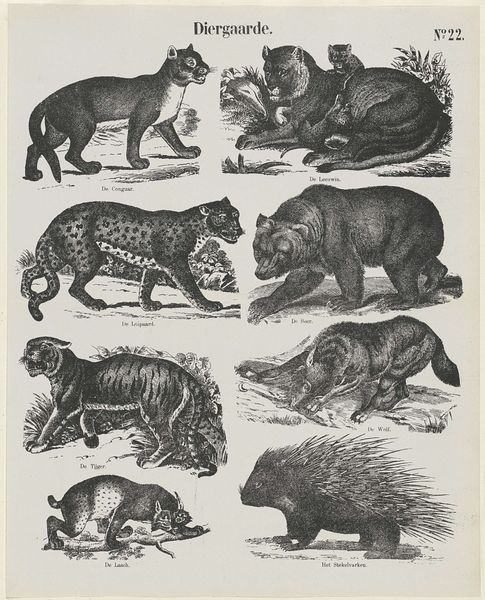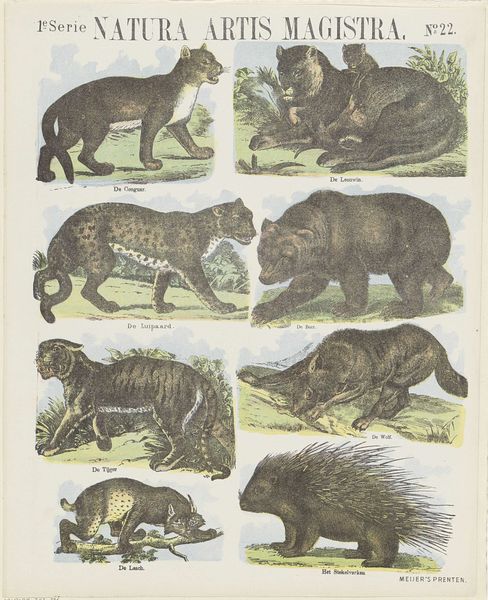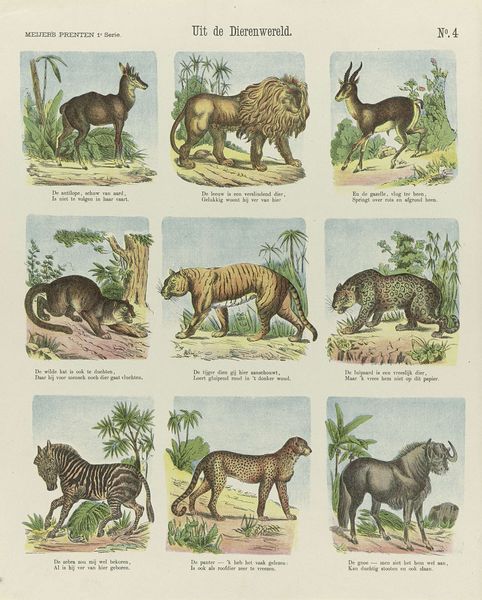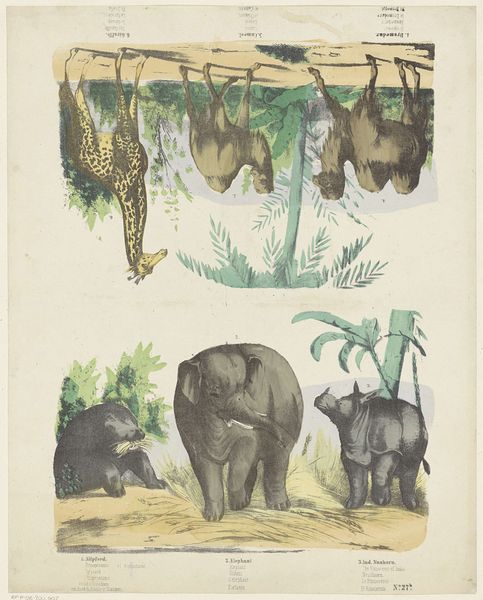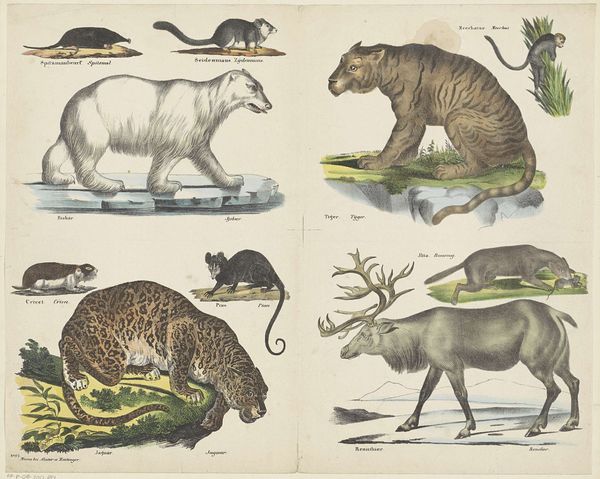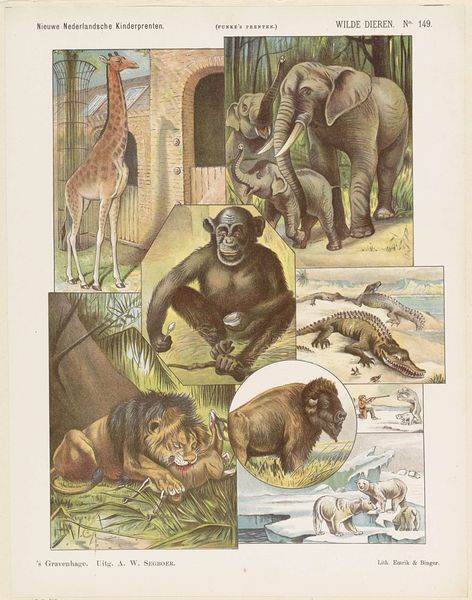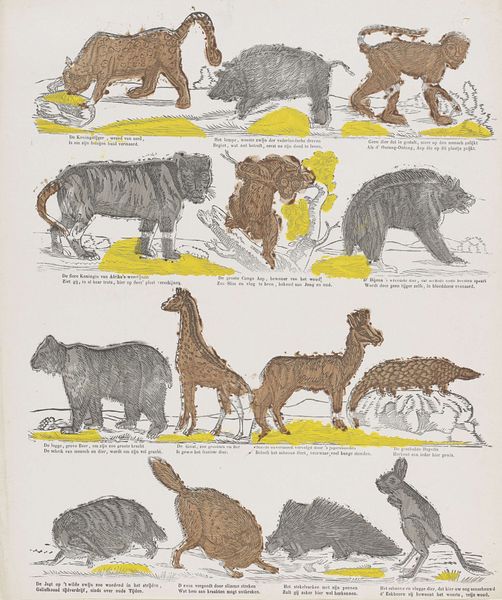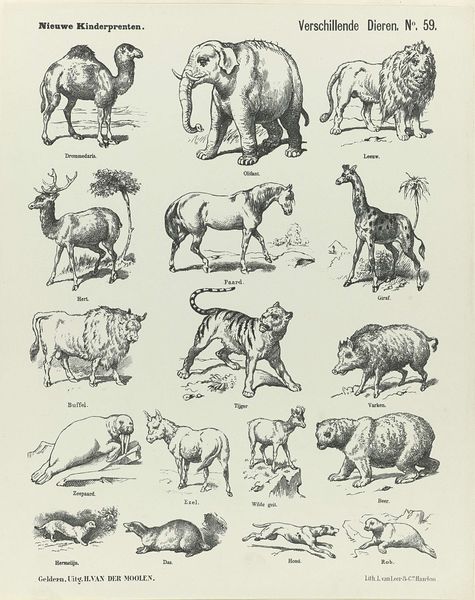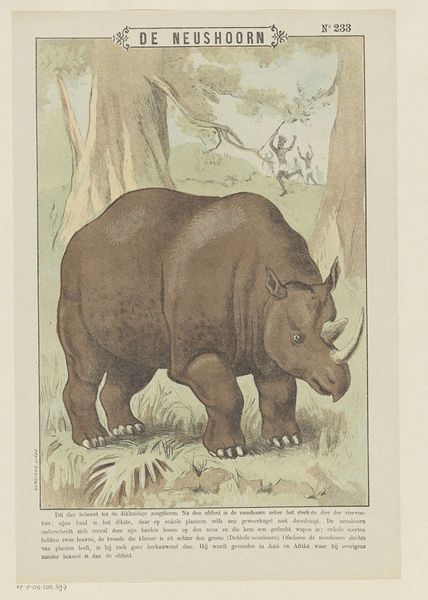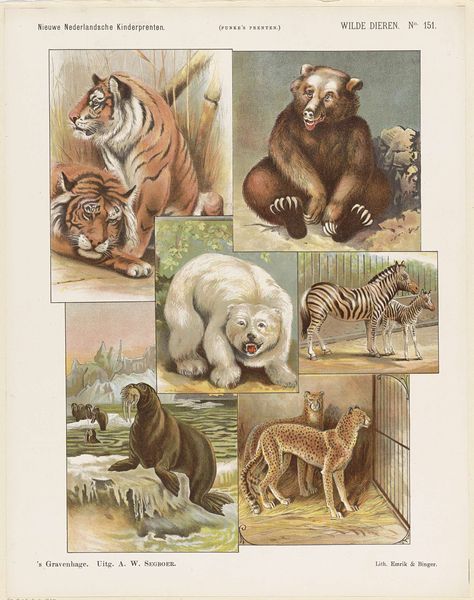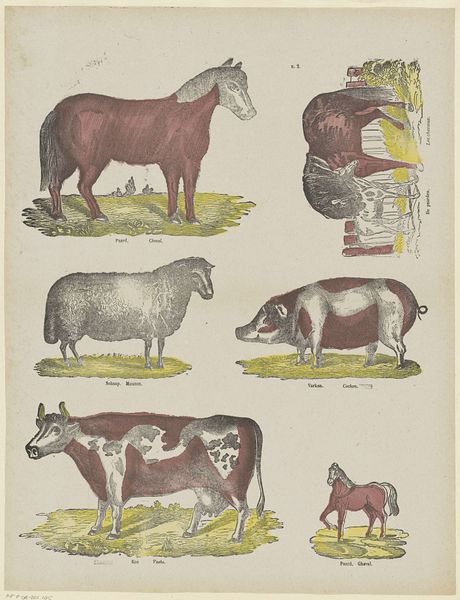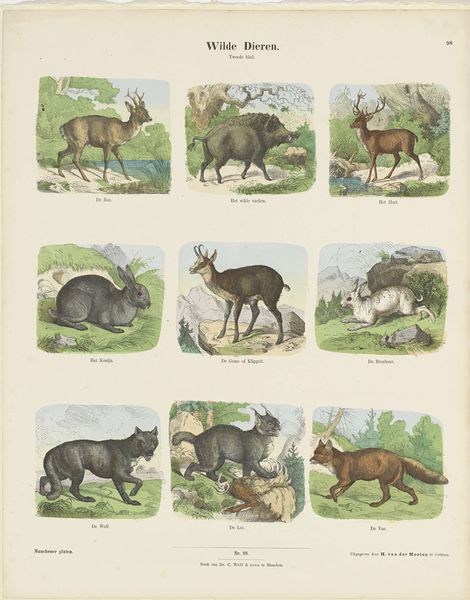
painting, watercolor
#
painting
#
watercolor
#
watercolour illustration
#
genre-painting
#
academic-art
#
watercolor
#
realism
Dimensions: height 443 mm, width 350 mm
Copyright: Rijks Museum: Open Domain
Curator: Looking at "Dieren uit vreemde landen" by Ernst Frölich, a watercolor created around 1843, my first thought is how orderly it feels. Each animal has its designated space. Editor: Orderly is one word; I’d say it’s more like a bizarre flattened Noah’s Ark! Each animal almost seems to be posing. It’s quite charming. What about the symbolism? Curator: It evokes a specific sense of colonial-era exploration. The careful delineation, almost clinical, echoes a scientific detachment coupled with an undeniable sense of wonder at the 'exotic' world being cataloged. Editor: Indeed, the composition relies heavily on simple, almost diagrammatic shapes, but the subtle rendering of light and shadow gives each creature volume and weight. There's a tension between scientific observation and aesthetic appeal. Curator: Think about what each of these animals represented to the 19th-century European imagination: power, majesty, exoticism, danger. These weren't just animals; they were emblems of far-off lands, of nature’s sublime power, brought into the comfortable domesticity of a watercolor study. Editor: That interplay you point out makes the piece, though perhaps naive, quite visually arresting. Notice the artist's careful study of texture—the roughness of the rhino’s hide, the camel’s shaggy fur, the tiger’s smooth coat. Curator: It reminds us of our history of encountering "otherness", perhaps even shaping stereotypes of those far-flung regions. The leopard's pose, for instance, almost reads as if it’s guarding something, imbued with cultural projections about Africa's mysteries. Editor: Agreed; beyond the details, the composition effectively organizes this diversity. The consistent backgrounds provide a clean structure to display the various forms, making it understandable within its time. Curator: Precisely, and for me, that clarity illuminates more than just animal forms; it reflects the era's mindset, anxieties, and ambitions. Editor: I will now look at the artwork again but with a more expanded frame! Thank you!
Comments
No comments
Be the first to comment and join the conversation on the ultimate creative platform.
